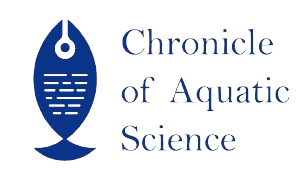| File | Action |
|---|---|
| CoAS_V1IS6_04 | Download |
- 919088951040 call us
- chronicleofaquaticscience@gmail.com Mail us
CoAS_V1IS6_04
Popular Article
Gout: introduction, manifestation and Nutritional Management
Payel Kumar Roy, Moumita Banerjee, Sreyashi Saha, Shaonee Saha, Pritha Biswas and Anirban Pattanayak*
Abstract
It is often recognized that gout is an inflammatory rheumatic illness that manifests as arthritis and improper uric acid metabolism. The identification of diet-induced systemic metabolic pathways has led to new understandings of the mechanisms involved and the development of possible treatments for gout. Nonetheless, dietary guidelines for gouty individuals typically concentrate on food groups rather than taking systemic metabolism and nutritional aspects into account at the same time. In particular for severe patients, the combination of medication and nutrition management may potentially yield increased therapy outcomes.
Keywords
Gout, dietary modification, urate crystal, joint pain, human health
References
Choi, H. K., & Curhan, G. (2007). Independent impact of gout on mortality and risk for coronary heart disease. Circulation, 116(8), 894-900.
Choi, H. K., & Curhan, G. (2008). Beer, liquor, and wine consumption and serum uric acid level: the Third National Health and Nutrition Examination Survey. Arthritis & Rheumatism, 59(3), 481-486.
Choi, H. K., & Curhan, G. (2008). Soft drinks, fructose consumption, and the risk of gout in men: prospective cohort study. British Medical Journal, 336(7639), 309- 312.
Choi, H. K., Atkinson, K., Karlson, E. W., Willett, W., & Curhan, G. (2005). Obesity, weight change, hypertension, diuretic use, and risk of gout in men: the health professionals follow-up study. Archives of Internal Medicine, 165(7), 742-748.
Clarson, L. E., et al. (2016). Increased cardiovascular mortality associated with gout: a systematic review and metaanalysis. European Journal of Preventive Cardiology, 23(4), 366-373.
Dalbeth, N., & Merriman, T. R. (2019). Crystal ball gazing: New therapeutic targets for hyperuricaemia and gout. Rheumatology, 58(5), 765-766.
Desai, R. J., et al. (2018). Gouty arthritis: a complex interplay between diabetes mellitus and gout. Current Rheumatology Reports, 20(3), 13.
FitzGerald, J. D., Dalbeth, N., Mikuls, T., Brignardello‐Petersen, R., Guyatt, G., Abeles, A. M., ... & Neogi, T. (2020). 2020 American College of Rheumatology guideline for the management of gout. Arthritis care & research, 72(6), 744-760.
Johnson, R. J., & Lanaspa, M. A. (2019). Uric acid. New England Journal of Medicine, 380(22), 2196-2206.
Juraschek, S. P., Miller, E. R., Gelber, A. C., Bodyak, N., Appel, L. J. (2012). Effects of the Dietary Approaches to Stop Hypertension (DASH) Diet and Sodium Intake on Serum Uric Acid. Arthritis & Rheumatism, 64(8), 2525-2532.
Krishnan, E. (2014). Gout and the risk of acute myocardial infarction. Arthritis & Rheumatology, 66(6), 1447-1452.
Richette, P., & Bardin, T. (2010). Gout. The Lancet, 375(9711), 318-328.
Zhang, W., Doherty, M., Bardin, T., Pascual, E., Barskova, V., Conaghan, P., ... & Richette, P. (2006). EULAR evidence-based recommendations for gout. Part II: Management. Annals of the Rheumatic Diseases, 65(10), 1312-1324.
Zhang, Y., & Chen, C. (2014). Dietary therapy for the management of hyperuricemia in gout: a systematic review. Evidence-Based Complementary and Alternative Medicine, 2014.
- Published online
- 27th November, 2023
How to Cite the Article
Roy, P. K., Banerjee, M., Saha, S., Saha, S., Biswas, P. and Pattanayak, A. 2023. Gout: introduction, manifestation and Nutritional Management. Chronicle of Aquatic Science 1(6): 48-54.
Copyright
This is an open-access article distributed under the terms of the Creative Commons Attribution License (CC BY). The use, distribution or reproduction in other forums is permitted, provided the original author(s) and the copyright owner(s) are credited and that the original publication in this journal is cited, in accordance with accepted academic practice. No use, distribution or reproduction is permitted which does not comply with these terms.

CoAS_V1IS6_04


